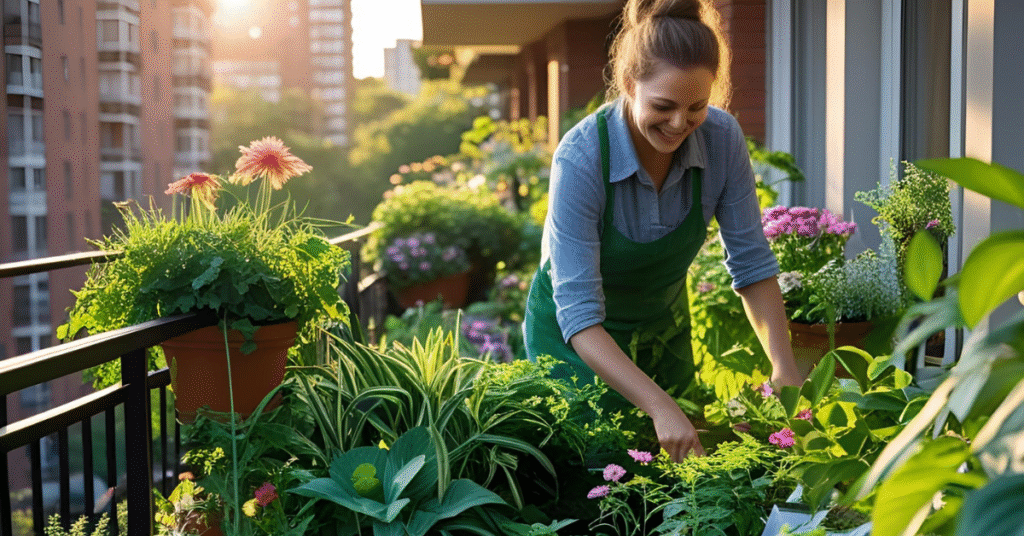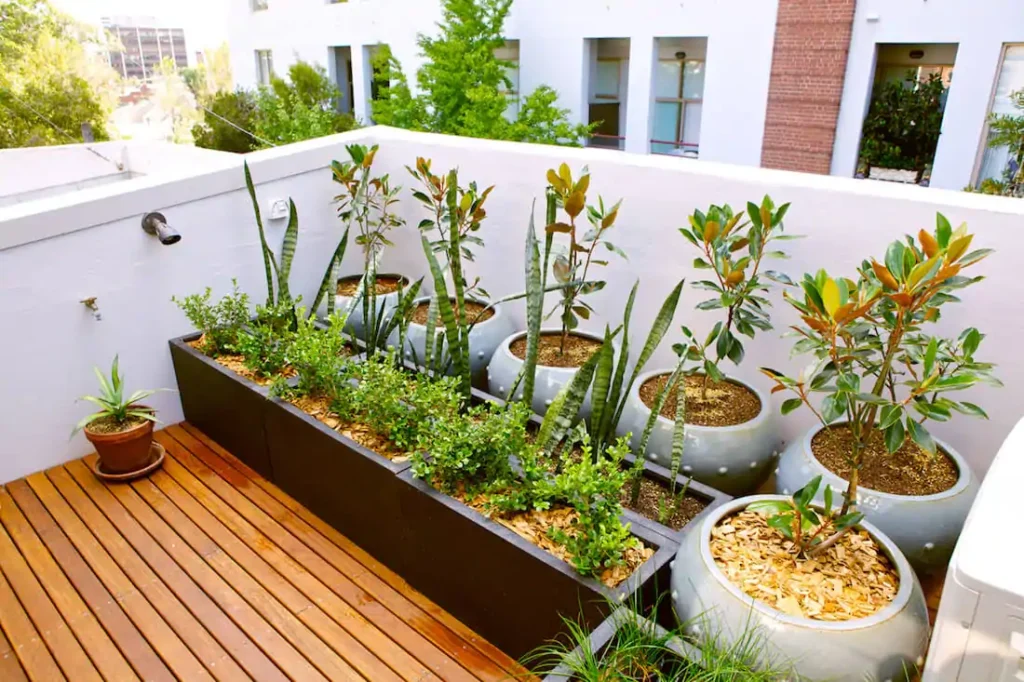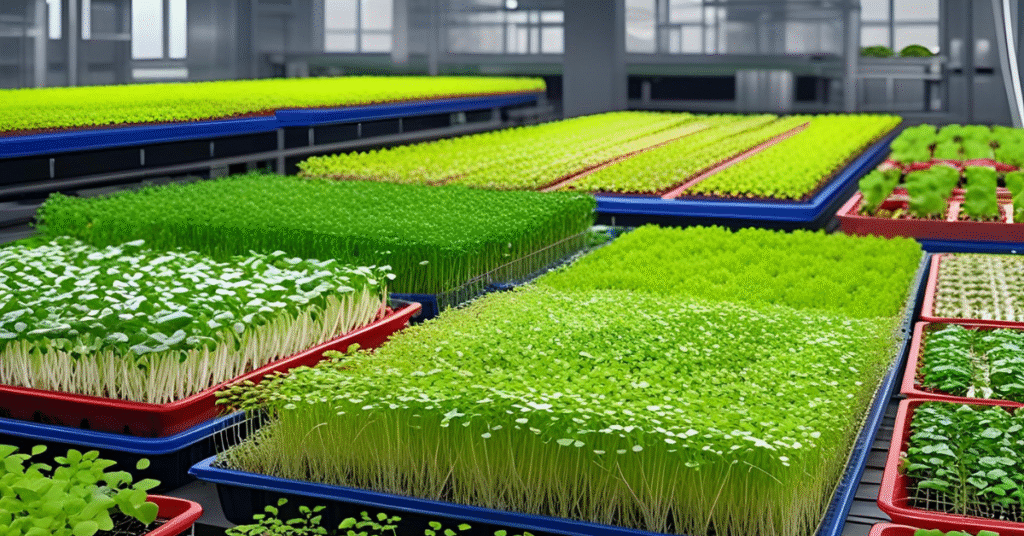When I first started growing microgreens in my urban apartment, I never considered that the soil beneath my city might be harboring invisible dangers. Urban soil contamination affects millions of city dwellers who want to grow their own food, yet most people remain unaware of the risks lurking in contaminated urban soils.
Critical Reality Check
Research shows that 42% of urban greenspace sites exceed safe contamination limits for arsenic, while lead contamination affects soil in virtually every major city worldwide.
This comprehensive guide will help you understand how the relationship between pH and heavy metal contamination of urban soil affects your growing choices, explore insights from leading soil contamination expert Helmut Meuser, and discover practical solutions for safe microgreens cultivation in urban environments.

Urban soil contamination represents one of the most pervasive yet overlooked environmental challenges of our time. Unlike rural agricultural soils, urban environments create unique contamination patterns that directly impact food safety and human health.
What Makes Urban Soils Different?
Primary Contamination Sources
- Vehicle emissions and traffic pollution
- Industrial activities and legacy contamination
- Lead-based paint from old buildings
- Atmospheric deposition from surrounding areas
- Poor waste management practices
Common Contaminants Found
- Lead (Pb) – Most widespread urban contaminant
- Cadmium (Cd) – From industrial processes
- Mercury (Hg) – Coal combustion and industry
- Zinc (Zn) and Copper (Cu) – Vehicle emissions
- Organic pollutants and microplastics
Contamination by the Numbers
73%
of urban soils show elevated heavy metal levels
200+ ppm
Unsafe lead levels in many city soils
5-fold
Higher contamination vs. rural areas
Helmut Meuser’s Groundbreaking Research on Contaminated Urban Soils
Helmut Meuser, Professor of Soil Protection and Soil Clean-up, has provided the most comprehensive analysis of contaminated urban soils in his seminal work. His research reveals critical insights that every urban grower should understand.
Key Finding from Meuser’s Research:
“Urban soils represent a complex mixture of natural soil materials and anthropogenic substances, creating unique contamination patterns that require specialized assessment and management approaches.”
Meuser’s Classification of Urban Soil Types
- Sealed soils – Under pavement and buildings
- Recreational soils – Parks and green spaces
- Residential garden soils – Home growing areas
- Industrial legacy soils – Former industrial sites
Meuser’s work emphasizes that contaminated urban soils require site-specific assessment because contamination patterns vary dramatically even within a single city block. This research has become foundational for understanding urban soil management worldwide.
The Critical Relationship Between pH and Heavy Metal Contamination
Understanding the relationship between pH and heavy metal contamination of urban soil is crucial for microgreens growers. This relationship directly affects whether contaminants remain bound in soil or become available for plant uptake.
How pH Affects Metal Availability
Acidic Conditions (pH < 6.5)
- Increased metal mobility and bioavailability
- Higher risk of plant uptake
- Lead and cadmium become more soluble
- Greater leaching potential
⚠️ Higher Risk Zone
Acidic urban soils pose greater contamination risks for food crops
Acidic Conditions (pH < 6.5)
- Increased metal mobility and bioavailability
- Higher risk of plant uptake
- Lead and cadmium become more soluble
- Greater leaching potential
⚠️ Higher Risk Zone
Acidic urban soils pose greater contamination risks for food crops
Metal Availability vs. Soil pH
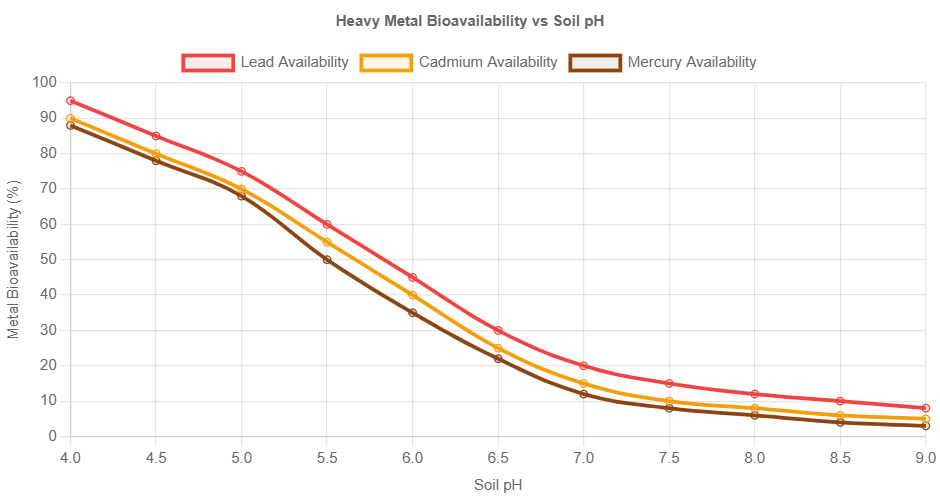
Research-Backed pH Management Strategy
Studies show that maintaining soil pH between 6.5-7.5 significantly reduces heavy metal bioavailability. Adding organic matter and lime can help buffer acidic urban soils.
pH 5.0-6.0: High metal mobility
pH 6.5-7.5: Optimal safe range
pH 8.0+: Very low mobility
Visual Timeline: Your Safe Microgreens Growing Journey
Follow this step-by-step visual timeline to grow healthy microgreens while avoiding urban soil contamination risks.
Day 0: Safe Setup & Soil Testing
Start with contamination-free growing medium. Test urban soil if planning outdoor cultivation.
- Choose certified organic potting mix
- Avoid direct urban soil contact
- Set up controlled environment
- Prepare sterilized trays
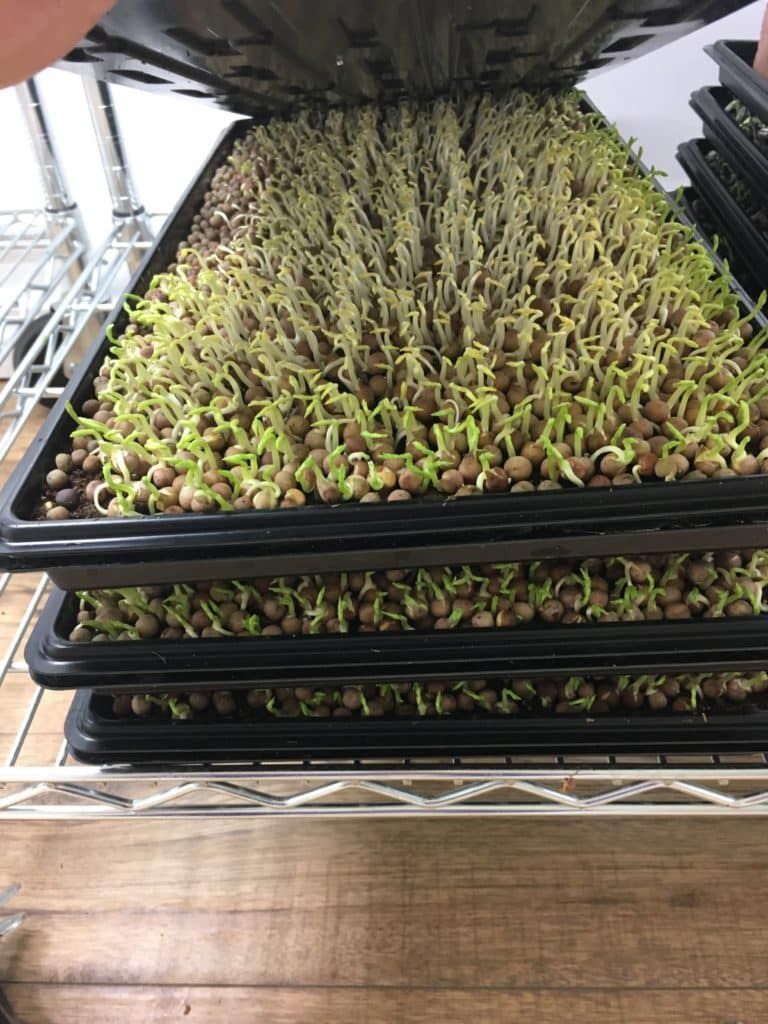
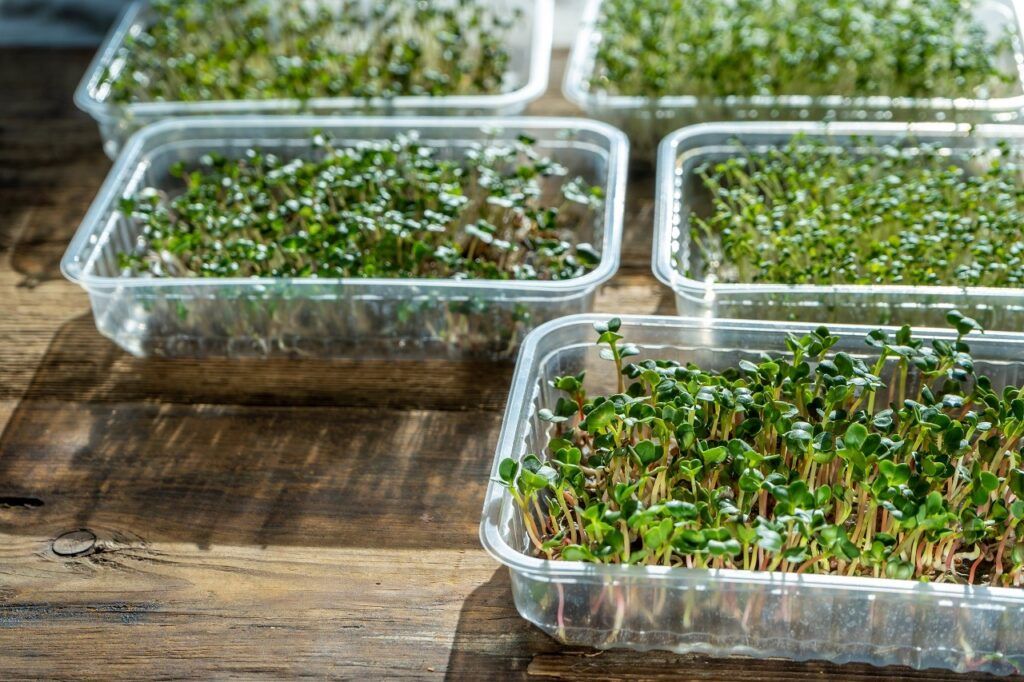
Day 3: Germination Success
Seeds have sprouted in clean environment, avoiding contaminated urban soil exposure.
Safety Check:
✓ No soil contact • ✓ Clean water source • ✓ Proper ventilation
Day 7: Vigorous Growth
Microgreens show healthy development in contaminant-free growing medium.
Height: 2-3 inches
Color: Vibrant green
Density: Full coverage
Health: No contamination signs
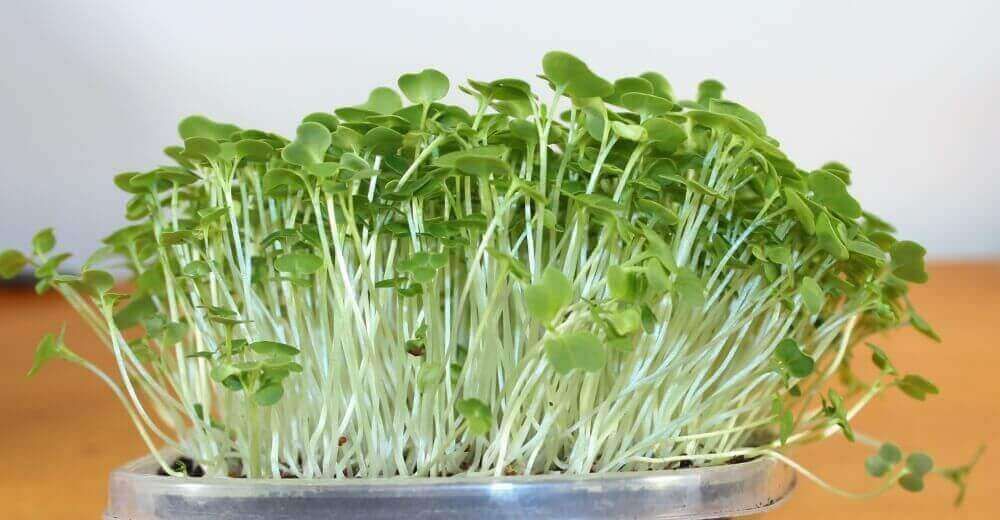

Day 10-14: Safe Harvest Time
Microgreens are ready for harvest with zero exposure to urban soil contamination.
Harvest Safety Protocol:
- Cut above growing medium level
- Rinse gently with clean water
- Dry carefully before storage
- Check for any contamination signs
Step-by-Step Guide: Growing Safe Microgreens in Urban Environments
This detailed process ensures your microgreens remain free from urban soil contamination while maximizing nutritional value and safety.
1. Soil Testing & Assessment
Before any urban growing project, understand your contamination risks.
- Test soil for lead, cadmium, mercury levels
- Check pH levels (aim for 6.5-7.5)
- Use certified soil testing labs
- Document baseline contamination levels
2. Safe Growing Medium Selection
Choose contaminant-free growing substrates to avoid contaminated urban soils.
Recommended Options:
- Certified organic potting mix
- Coconut coir with perlite
- Hydroponic growing mats
- Sterilized compost blends
3. Container Setup & Sterilization
Create a controlled environment that eliminates contamination pathways.
- Use food-grade containers only
- Sterilize all equipment with 10% bleach solution
- Ensure proper drainage systems
- Set up in clean, indoor environment
4. Water Quality Management
Water quality is crucial since urban water systems can carry contaminants.
Water Safety Protocol:
- Use filtered or distilled water
- Test water pH (6.0-7.0 ideal)
- Avoid tap water in high-contamination areas
- Monitor for chlorine and heavy metals
5. Seed Selection & Pre-treatment
Choose high-quality, uncontaminated seeds to prevent pathogen introduction.
- Buy from certified organic suppliers
- Inspect seeds for damage or mold
- Optional: hydrogen peroxide seed wash
- Store seeds in clean, dry conditions
6. Environmental Controls
Maintain optimal growing conditions while preventing contamination.
Temperature: 65-75°F
Humidity: 40-60%
Light: 12-16 hours LED
Airflow: Gentle circulation
7. Growth Monitoring & Safety Checks
Regular monitoring ensures contamination-free growth throughout the cycle.
- Daily visual inspection for mold or discoloration
- Monitor growth rate and plant health
- Check for any unusual odors
- Maintain consistent watering schedule
8. Safe Harvesting & Storage
Proper harvesting maintains safety and maximizes nutritional value.
Harvest Protocol:
- Use clean, sharp scissors
- Cut just above growing medium
- Gentle rinse with filtered water
- Air dry before refrigeration
- Store in clean containers
Essential Tools for Safe Urban Microgreens Growing
- Soil Test Kit
- Water Filter
- pH Meter
- LED Grow Lights
Adapting to Urban Climate Challenges
Urban environments present unique climate challenges that can affect both contamination levels and microgreens growing success. Here’s how to adapt your approach based on common urban conditions.
Urban Heat Island Effect
Cities can be 2-5°F warmer than surrounding areas, increasing evaporation and affecting urban soil contamination mobility.
Challenges:
- Increased water evaporation rates
- Higher contamination concentration
- Faster drying of growing medium
- Stress on microgreens
Solutions:
- Increase watering frequency
- Use humidity domes or covers
- Position away from heat sources
- Consider evaporative cooling
Air Pollution & Particulates
Urban air contains pollutants that can settle on growing surfaces and contaminate crops.
Challenges:
- Atmospheric deposition of heavy metals
- Particulate matter settling on plants
- Vehicle emissions contamination
- Industrial pollutant exposure
Solutions:
- Grow indoors or in covered areas
- Use air filtration systems
- Position away from roads/industry
- Regular washing of surfaces
Extreme Weather Events
Heavy rains and storms can mobilize contaminants and disrupt growing conditions.
Weather Impact on Contamination:
Heavy Rain: Mobilizes contaminants
Flooding: Spreads contamination
Wind: Disperses particles
Drought: Concentrates pollutants
Protective Measures:
- Indoor growing systems
- Covered growing areas
- Emergency protocols for extreme weather
- Backup power for climate control
Limited Growing Space
Urban space constraints require efficient, contamination-safe growing methods.
Space-Efficient Solutions:
- Vertical growing systems
- Stackable tray systems
- Windowsill growing setups
- Hydroponic tower gardens
Maximum Yield in Minimal Space:
• 1 sq ft: Can produce 2-4 oz microgreens weekly
• Vertical systems: Triple production capacity
• 10-14 day cycles: Continuous harvests possible
Seasonal Adaptation Strategy
Winter
Indoor growing, supplemental heating, shorter day cycles
Spring
Increase production, monitor contamination from runoff
Summer
Heat management, increased watering, air filtration
Fall
Prepare for winter, harvest preservation methods
These practical insights come from extensive research and urban growing experiences, helping you avoid common pitfalls when dealing with urban soil contamination.
Early Contamination Detection Signs
Recognizing contamination early can save your entire crop and protect your health. Here are key warning signs that indicate potential exposure to contaminated urban soils:
Visual Indicators:
- Stunted growth despite proper care
- Yellowing leaves (chlorosis) in young plants
- Brown leaf tips or unusual discoloration
- Irregular growth patterns across trays
- Premature wilting with adequate water
Environmental Clues:
- Unusual soil odors (metallic, chemical)
- Strange water discoloration during watering
- Poor germination rates with quality seeds
- Pest resistance issues (weakened plants)
- Soil pH readings outside normal range
⚠️ Immediate Action Required: If you observe multiple indicators, stop harvesting immediately and test your growing medium. Consider professional soil analysis before continuing.
Proven Success Strategies for Urban Growing
These strategies have consistently produced safe, healthy microgreens even in challenging urban environments with known contamination risks.
The Barrier Method
Create physical barriers between plants and potential contamination sources.
- Use raised containers (6+ inches high)
- Line with food-grade plastic
- Install air filtration systems
The Clean Cycle Approach
Maintain contamination-free cycles through systematic cleaning protocols.
- Replace growing medium after each harvest
- Sterilize containers between cycles
- Document all inputs and sources
The Pure Input Strategy
Control every input to eliminate contamination pathways.
- Source verified organic seeds
- Use tested, filtered water
- Monitor air quality continuously
Key Success Metric: Successful urban growers typically achieve 95%+ germination rates and consistent 10-14 day harvest cycles by maintaining strict contamination control protocols.
Common Mistakes That Increase Contamination Risk
Avoid these frequent mistakes that can expose your microgreens to urban soil contamination and compromise food safety.
Mistake #1: Using Unverified Urban Soil
Many beginners collect soil from urban areas without testing, assuming it’s safe for food production.
Solution: Always use certified growing medium or test soil extensively before any food production.
Mistake #2: Inadequate Water Source Management
Using untested tap water or collected rainwater that may contain urban contaminants.
Solution: Test water sources regularly and use filtration systems when necessary.
Mistake #3: Ignoring Air Quality Impact
Assuming that indoor growing automatically protects from atmospheric contamination.
Solution: Monitor indoor air quality and use filtration, especially near busy roads or industrial areas.
Quick Wins for Immediate Safety Improvement
These simple changes can dramatically reduce your exposure risk to urban soil contamination with minimal investment.
Elevate Growing Containers
Raise containers 12+ inches off ground to reduce contamination transfer
Create Physical Barriers
Use plastic sheeting to separate growing area from potential contamination
Install Simple Air Filtration
Use HEPA filters in growing areas to reduce particulate contamination
Implement Regular Testing
Test water and growing medium monthly with simple home test kits
Source Certified Organic Inputs
Invest in verified clean seeds and growing medium
Monitor Plant Health Indicators
Document growth patterns to catch contamination issues early
Reflection & Lifestyle Impact: Safe Urban Growing for Better Living
Growing safe microgreens in urban environments offers more than just fresh food—it creates a pathway to better health and environmental awareness in our contaminated world.
Health & Nutrition Impact
Microgreens are a fun way to add fresh, nutrient-dense greens to your meals while knowing exactly what went into growing them.
- 40x more nutrients than mature vegetables
- Zero pesticide residues with proper growing
- Fresh daily harvests maximize vitamin content
- Reduced food miles from garden to plate
Environmental Connection
Understanding urban soil contamination creates deeper awareness of environmental challenges in our cities.
- Increased environmental awareness of urban pollution
- Better understanding of food system challenges
- Reduced packaging waste from store-bought greens
- Lower carbon footprint for fresh produce
Daily Life Enhancement
This simple gardening habit can improve your daily routine and provide satisfying, productive activities.
- 10-15 minutes daily for maintenance and harvesting
- Stress relief through hands-on gardening
- Educational opportunities for children
- Consistent fresh ingredients for cooking
Transforming Urban Spaces
Urban spaces can become greener and more productive with minimal effort, even when dealing with soil contamination challenges. Safe microgreens growing demonstrates that small-scale food production is possible anywhere.
Community Benefits:
- Sharing knowledge about contamination risks
- Inspiring others to grow safe food
- Supporting local sustainable practices
- Creating awareness about urban soil issues
Individual Impact:
- Personal food security improvement
- Reduced dependence on commercial produce
- Better nutrition knowledge and habits
- Increased confidence in food safety
Economic Benefits of Safe Urban Growing
$3-5
Weekly grocery savings
$50
Initial setup cost
$2
Weekly operating cost
3 months
Time to break even
Growing safe microgreens provides excellent return on investment while ensuring food safety in contaminated urban environments.
Frequently Asked Questions About Urban Soil Contamination & Microgreens
What is urban soil contamination and why should microgreens growers care?
Urban soil contamination refers to the presence of harmful substances like heavy metals (lead, cadmium, mercury), pesticides, and organic pollutants in city soils. Microgreens growers should care because contaminated soil can transfer these toxins to crops, affecting food safety and human health.
Key fact: Research shows that 73% of urban soils contain elevated heavy metal levels that exceed safe limits for food production.
How does pH affect heavy metal contamination in urban soil?
The relationship between pH and heavy metal contamination of urban soil is critical for plant safety. Lower pH (acidic conditions) generally increases heavy metal mobility and bioavailability, making them more likely to be absorbed by plants. Higher pH can bind metals to soil particles, reducing their uptake.
Acidic Soil (pH < 6.5):
Higher metal availability and plant uptake risk
Acidic Soil (pH < 6.5):
Higher metal availability and plant uptake risk
What insights does Helmut Meuser provide about contaminated urban soils?
Helmut Meuser, a leading expert on soil contamination, identifies urban soils as complex mixtures of natural and anthropogenic materials. His research in “Contaminated Urban Soils” reveals that contaminated urban soils require site-specific assessment due to highly variable contamination patterns, even within single city blocks.
Meuser’s Key Classifications:
- Sealed soils (under pavement)
- Recreational soils (parks, green spaces)
- Residential garden soils
- Industrial legacy soils
Can microgreens grown in contaminated urban areas be safe to eat?
Microgreens can be safe when grown using proper contamination prevention methods. The key is avoiding direct contact with contaminated urban soils by using certified clean growing medium, filtered water, and controlled environments. Research shows that using clean substrates eliminates contamination transfer pathways.
Safety strategy: Use hydroponic systems, certified organic potting mix, or sterilized growing medium instead of urban soil for microgreens production.
What are the most common sources of urban soil contamination affecting food gardens?
The primary sources include vehicle emissions (lead, zinc, copper), industrial activities (heavy metals, organic compounds), lead-based paint from old buildings, atmospheric deposition from surrounding areas, and poor waste management practices.
Most Widespread Contaminants:
- Lead (Pb) – paint and gasoline legacy
- Cadmium (Cd) – industrial processes
- Mercury (Hg) – coal combustion
Risk Factors:
- Distance from major roads
- Building age (pre-1978 paint)
- Industrial proximity
How can I test my urban soil for contamination before growing food?
Professional soil testing is essential for food production in urban areas. Contact your local university extension office or certified environmental labs for comprehensive testing including heavy metals, pH, and organic contaminants.
Testing Protocol:
- Collect samples from multiple locations
- Test for lead, cadmium, mercury, arsenic
- Check pH levels and organic matter
- Request interpretation for food production
- Typical cost: $50-150 per comprehensive test
What’s the safest way to grow microgreens in a contaminated urban environment?
The safest approach is complete avoidance of urban soil through controlled indoor growing systems using certified clean inputs. This eliminates all contamination pathways while maintaining optimal growing conditions.
Recommended Safe Growing Method:
- Indoor hydroponic or soilless systems
- Certified organic growing medium
- Filtered water sources
- Air filtration in growing areas
- Regular monitoring and testing protocols
Growing Forward: Your Safe Urban Microgreens Journey
Understanding urban soil contamination doesn’t have to end your dreams of growing fresh food in the city. Armed with knowledge about contaminated urban soils, insights from experts like Helmut Meuser, and understanding of the relationship between pH and heavy metal contamination, you can create safe, productive growing systems anywhere.
Your Action Plan
- Start safe: Use certified growing medium, not urban soil
- Test everything: Water, air quality, and growing inputs
- Stay informed: Monitor contamination research and best practices
- Share knowledge: Help others grow safely in urban environments
The Bigger Picture
Every safe microgreens harvest demonstrates that urban food production is possible despite contamination challenges. You’re part of a growing movement toward safer, more sustainable urban food systems.
Your success inspires others and contributes to broader awareness about urban soil contamination and food safety.
Ready to Start Growing Safely?
Remember: urban soil contamination is a challenge to work around, not a barrier to overcome. With proper knowledge and techniques, you can grow healthy, safe microgreens that nourish your body and give you confidence in your food’s safety.
Science-backed methods
Safety-first approach
Sustainable practices
